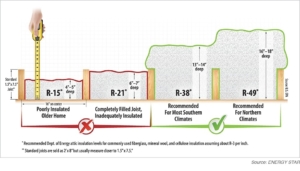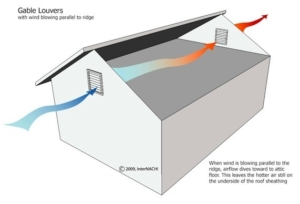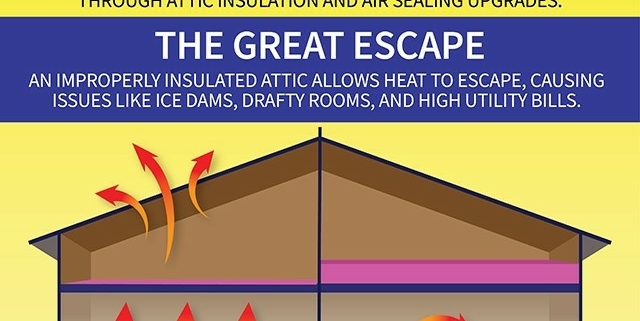Attic Rain
Attic Rain
What is Attic Rain?!
Attic Rain is basically moist air that has frozen in the attic space. When warmer weather melts this frozen moisture, it then falls to the ceiling below and potentially makes its way through to the ceiling interior. This process has been commonly referred to as ‘Attic Rain’
Let us break this down and explain the process and also what we can do for preventative measures.
So, how does this happen?
Consider heat rises and escapes through the ceiling of the interior of your home. Attic Insulation is designed to help contain the heat inside your home and makes the home more energy efficient. (All homes have varying types and depths of attic insulation, in this article, we are referring to a typical and most common installation of Blown-in Fibreglass Insulation). While the insulation levels in your home may meet the minimum requirements, heat can still escape through the insulation.
When the heat rises and escapes through the attic insulation, it holds moisture from the home interior. This moisture may be added to the air purposely from a humidifier installed in the furnace of the home, but moisture is also added to the interior environment through daily activities, such as showering and cooking etc. This moisture travels with the rising heat, into the attic space. When we have extremely cold temperatures outside, this warm interior air with a moisture content meets the dryer cold air and can condense on the underside of the roof sheathing. This may be seen as frost on the underside of the roof in the attic. When these extremely cold exterior temperatures turn to much warmer temperatures, the frozen condensed moisture can melt rapidly and fall to the attic insulation below. This has been commonly phrased as ‘Attic Rain’. When this moisture is in excess, it can make its way through to the interior ceiling in large quantities and actually form drips and stains on the interior. This may seem to most people like a roof leak, but in actual fact can be explained as the phenomenon above.
What can we do to avoid this?
There are two main areas that can be improved to help this situation. Insulation and Ventilation.
As mentioned above, your Attic Insulation may already be at acceptable levels. However, the insulation levels can be increased. This can be achieved quite easily by having blown-in insulation added to the current levels, (as an example). This will help with heat escaping into the attic space, increase heat efficiency and help to decrease heating costs in the home. A Professional Insulation Contractor can provide options for this scenario.

Ventilation and Airflow is another factor to consider. All homes with an attic space should have existing ventilation systems already in place. Examples of these systems are Ventilated Soffits, Roof Vents and Gable Vents, (to name a few). Just like the Insulation levels mentioned above, Ventilation Systems may meet the minimum requirements, but can also be improved upon. This may be a bit more of an invasive process, where additional Roof Vents can be installed to the roof, Gable Vents can be added to applicable gables and even attic ventilation fans etc. These will require services by a Professional Contractor.
See examples of Roof and Soffit Ventilation and Gable Vents below.


You kay wish to have further evaluation in these areas by a Qualified Professional OR make this part on an Annual Home Inspection to gain an updated review of you homes overall current condition.



Leave a Reply
Want to join the discussion?Feel free to contribute!